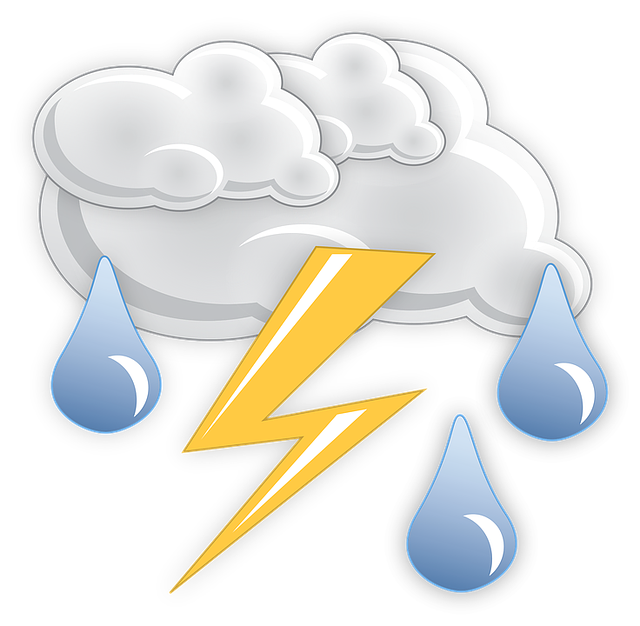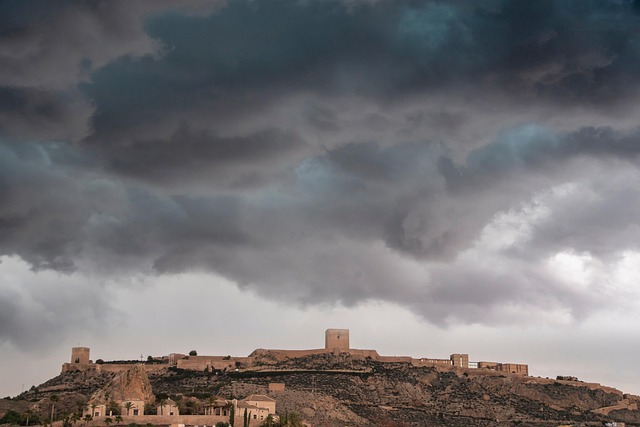Karachi, Pakistan's economic hub, faces unique climatic challenges due to its semi-arid climate. Recent anomalies include extreme heatwaves (above 45°C) and unseasonal flash floods, highlighting the city's vulnerability to rapid climate change. Heatwaves pose health risks, while variable rainfall patterns disrupt infrastructure. The primary drivers are global warming and human activities like burning fossil fuels and deforestation. Severe weather events have far-reaching social and economic impacts, exacerbating existing inequalities. Adaptation measures include sustainable urban planning, green spaces, efficient cooling, early warning systems, community education, and improved drainage networks.
Karachi, Pakistan’s vibrant metropolis, has recently experienced a dramatic shift in weather patterns, marked by record-breaking highs and unprecedented lows. This phenomenon has prompted an urgent exploration of its unique climatic challenges. From intense heatwaves scorching the city to sudden cold snaps disrupting summer’s usual tempo, understanding these anomalies is crucial. This article delves into Karachi’s historical weather perspective, analyzing the causes behind these extremes and their social and economic implications, offering insights for adaptation strategies to mitigate future impacts.
- Understanding Karachi's Weather Patterns: A Historical Perspective
- Unraveling the Record Highs: Heatwaves and Their Impact
- The Extreme Lows: Uncommon Cold Snaps in Early Summer
- Factors Contributing to Weather Anomalies
- Social and Economic Implications of Severe Weather Events
- Adaptation Strategies for Karachi's Unique Climatic Challenges
Understanding Karachi's Weather Patterns: A Historical Perspective

Karachi, Pakistan’s economic hub, experiences a semi-arid climate with distinct seasons. Understanding its weather patterns requires a historical lens to appreciate the recent anomalies. Historically, summers in Karachi have been hot and dry, with temperatures often exceeding 40°C, while winters are mild, usually ranging between 15°C to 25°C. Rainfall is sporadic, typically occurring during the monsoon seasons from July to September.
Recent weather anomalies have disrupted these established patterns. Extreme heatwaves have become more frequent, pushing temperatures beyond 45°C and posing significant challenges to the city’s infrastructure and residents’ well-being. Conversely, unseasonal rainfall events have led to flash floods, highlighting Karachi’s vulnerability to rapid climate change. This historical perspective underscores the urgency of adapting to these new weather extremes to ensure the resilience of Pakistan’s largest metropolis.
Unraveling the Record Highs: Heatwaves and Their Impact

In recent years, Karachi has witnessed unprecedented heatwaves that have set new records. These extreme temperature events, characterized by prolonged periods of scorching heat, have significant impacts on both human health and the environment. During a typical heatwave, temperatures often soar above 45°C (113°F), creating a challenging and sometimes dangerous living condition for residents. The intense heat can lead to various health issues, including dehydration, heat exhaustion, and even fatal cases of heatstroke.
Karachi’s heatwaves are not just isolated incidents but part of a broader trend of global warming and climate change. They highlight the urgent need for adaptation strategies, such as improving urban planning with an emphasis on green spaces and efficient cooling infrastructure. Additionally, raising public awareness about heat-related risks and implementing early warning systems can significantly mitigate the impact of these record highs.
The Extreme Lows: Uncommon Cold Snaps in Early Summer

In recent times, Karachi has experienced a peculiar phenomenon—extreme low temperatures during early summer, a stark contrast to the typically hot and humid season. These uncommon cold snaps have left residents and meteorologists alike intrigued. The sudden drop in temperature, often accompanied by chilly winds, has resulted in a unique weather pattern that is both surprising and significant.
Karachi, known for its sub-tropical climate, usually sees a gradual increase in heat from spring to summer. However, these early summer cold snaps have brought record lows, with temperatures dipping below average levels. Such events are not only unusual but also indicative of broader climatic shifts. They highlight the unpredictable nature of global weather patterns and serve as a reminder that even cities like Karachi, accustomed to specific seasonal norms, can be caught off guard by extreme weather anomalies.
Factors Contributing to Weather Anomalies

Weather anomalies, characterized by extreme record highs and lows, have become increasingly frequent globally, including cities like Karachi. Several factors contribute to these unpredictable changes. One primary factor is climate change, driven by human activities such as burning of fossil fuels and deforestation, leading to rising global temperatures. This, in turn, disrupts atmospheric patterns, causing shifts in weather systems.
Another significant contributor is urban heat islands (UHI) effect, particularly evident in densely populated areas like Karachi. Concrete jungles absorb and retain heat, making city centers significantly warmer than surrounding rural areas. This phenomenon exacerbates the impact of climate change and can lead to more intense heatwaves and rapid temperature fluctuations. Moreover, natural variations in weather patterns, such as El Niño or La Niña events, interact with these man-made factors, further complicating predictions and contributing to the extreme weather anomalies observed in recent years.
Social and Economic Implications of Severe Weather Events

Severe weather events, marked by record highs and lows, have profound social and economic implications, especially in densely populated urban centers like Karachi. Extreme temperatures disrupt daily life, affecting transportation, industry, and agriculture. Heatwaves can lead to increased hospital admissions and pose risks to vulnerable populations, particularly the elderly and those with pre-existing health conditions. Conversely, heavy rainfall and floods cause widespread damage to infrastructure, homes, and businesses, leading to displacement and economic losses.
In Karachi, these events have become more frequent and intense due to climate change, exacerbating existing social and economic inequalities. Lower-income communities often lack access to adequate disaster preparedness resources and face greater challenges in recovering from such events. Additionally, severe weather disrupts supply chains and business operations, impacting local economies and employment. These disruptions can trigger migration as people seek more stable environments, further straining urban services and infrastructure.
Adaptation Strategies for Karachi's Unique Climatic Challenges

Karachi, as a coastal metropolis, faces unique climatic challenges characterized by extreme temperatures and variable rainfall patterns. Adaptation strategies are crucial to mitigate the impact of record highs and lows in recent weather anomalies. The city must embrace sustainable urban planning and infrastructure development that enhances resilience against heatwaves and heavy rainfall events.
This includes implementing green initiatives such as expanding urban greenery, promoting water-efficient landscapes, and integrating renewable energy sources. Additionally, efficient waste management systems and improved drainage networks are essential to address the challenges posed by intense rainfall. Community education and awareness programs can empower citizens to adopt water conservation practices, safe sheltering during extreme weather events, and report infrastructure issues promptly.
Karachi’s weather anomalies, marked by record highs and lows, underscore the city’s unique climatic challenges. Understanding historical patterns is crucial for effective adaptation strategies. Heatwaves impact health and daily life, while early summer cold snaps are uncommon yet significant. Social and economic implications necessitate proactive measures to mitigate severe weather events. By embracing innovative solutions, Karachi can navigate these changes, ensuring a resilient and sustainable future for its folks.
